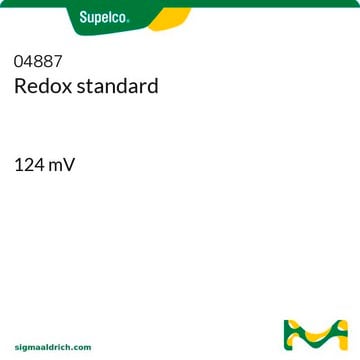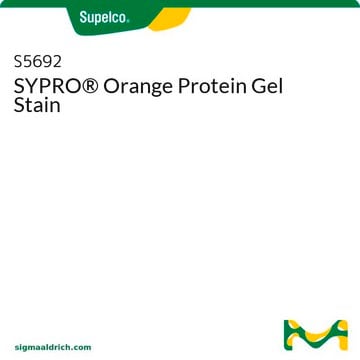10417
8-Anilino-1-naphthalenesulfonic acid ammonium salt
for fluorescence, ≥97.0% (HPLC)
Synonym(s):
1,8-ANS NH4, ANSA, Ammonium 8-anilino-1-naphthalenesulfonate, N-Phenyl peri acid
About This Item
Recommended Products
grade
for fluorescence
Quality Level
Assay
≥97.0% (HPLC)
form
solid
loss
≤2.5% loss on drying
mp
245-253 °C
solubility
H2O: 0.1 g/5mL, clear to very slightly hazy (hot)
NaOH: 1 N
H2O: soluble
acetone: soluble
methanol: soluble
fluorescence
λex 388 nm; λem 470 nm in 0.1 M Tris, 0.2 M KCl, pH 9.0, BSA
SMILES string
N.OS(=O)(=O)c1cccc2cccc(Nc3ccccc3)c12
InChI
1S/C16H13NO3S.H3N/c18-21(19,20)15-11-5-7-12-6-4-10-14(16(12)15)17-13-8-2-1-3-9-13;/h1-11,17H,(H,18,19,20);1H3
InChI key
IPBNQYLKHUNLQE-UHFFFAOYSA-N
Looking for similar products? Visit Product Comparison Guide
Application
Storage Class Code
11 - Combustible Solids
WGK
WGK 3
Flash Point(F)
Not applicable
Flash Point(C)
Not applicable
Personal Protective Equipment
Certificates of Analysis (COA)
Search for Certificates of Analysis (COA) by entering the products Lot/Batch Number. Lot and Batch Numbers can be found on a product’s label following the words ‘Lot’ or ‘Batch’.
Already Own This Product?
Find documentation for the products that you have recently purchased in the Document Library.
Customers Also Viewed
Articles
Nitric oxide (NO) as a signal transporter in neurons, endothelial cells and in the immune system.
Our team of scientists has experience in all areas of research including Life Science, Material Science, Chemical Synthesis, Chromatography, Analytical and many others.
Contact Technical Service











